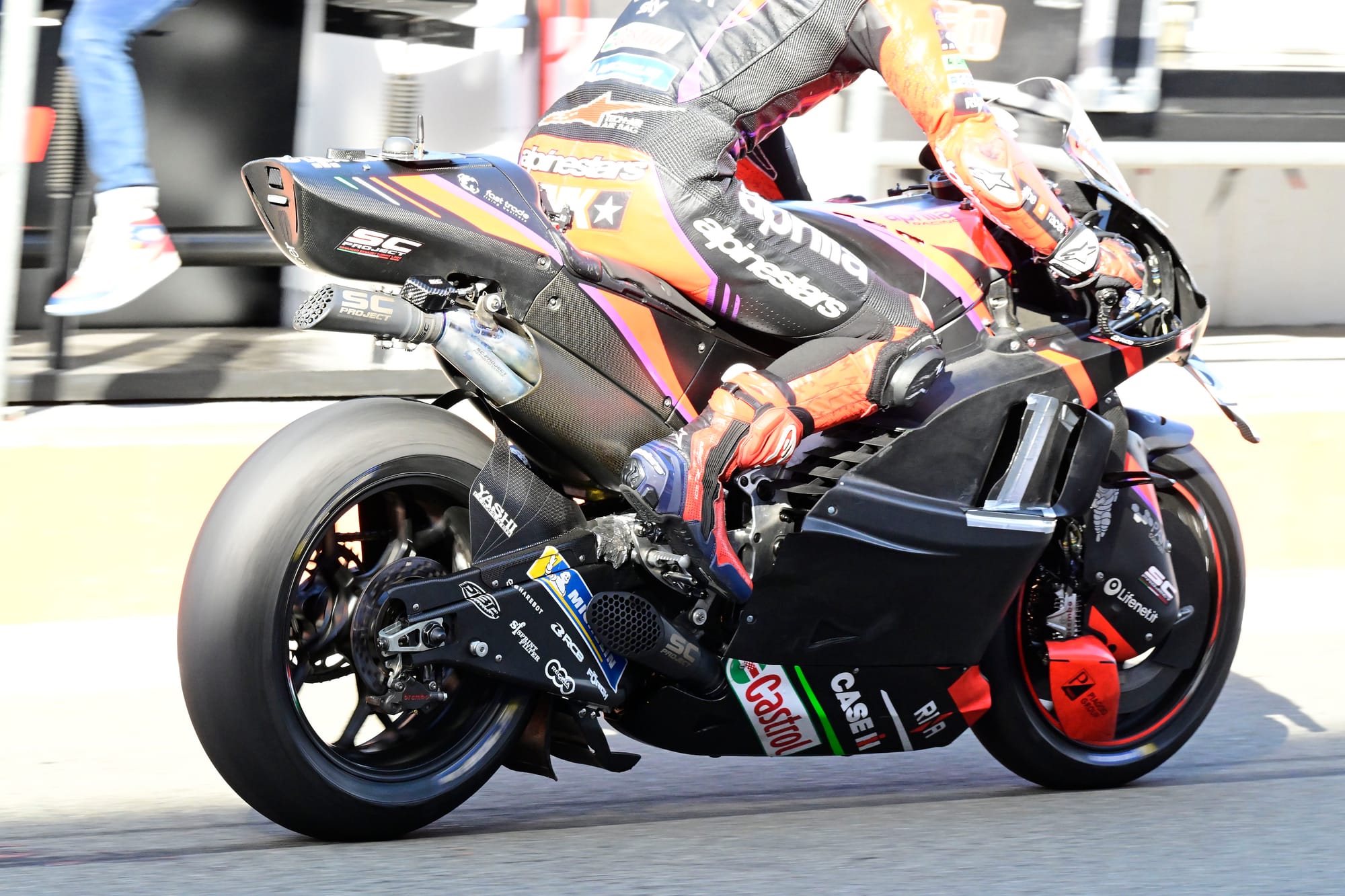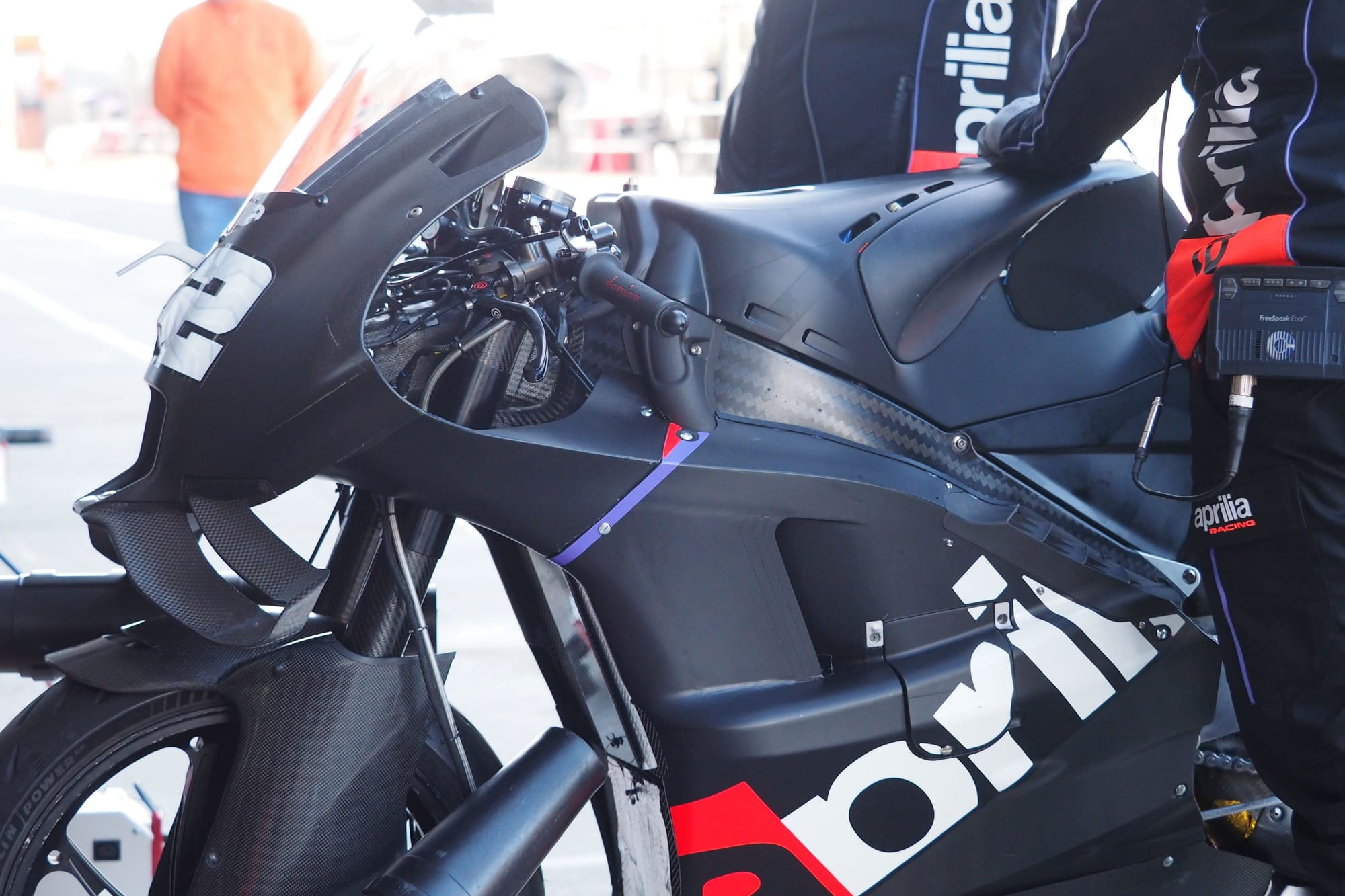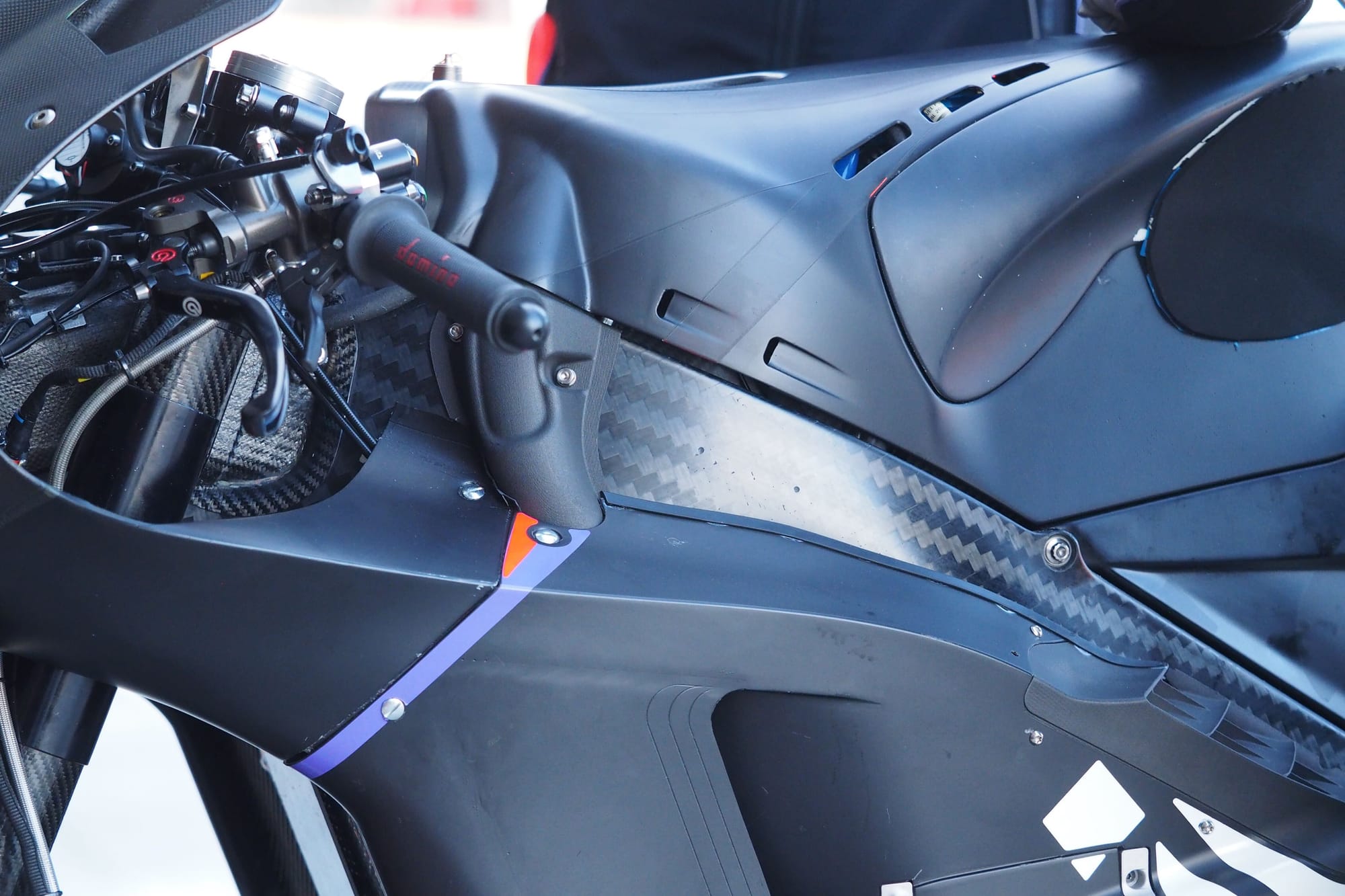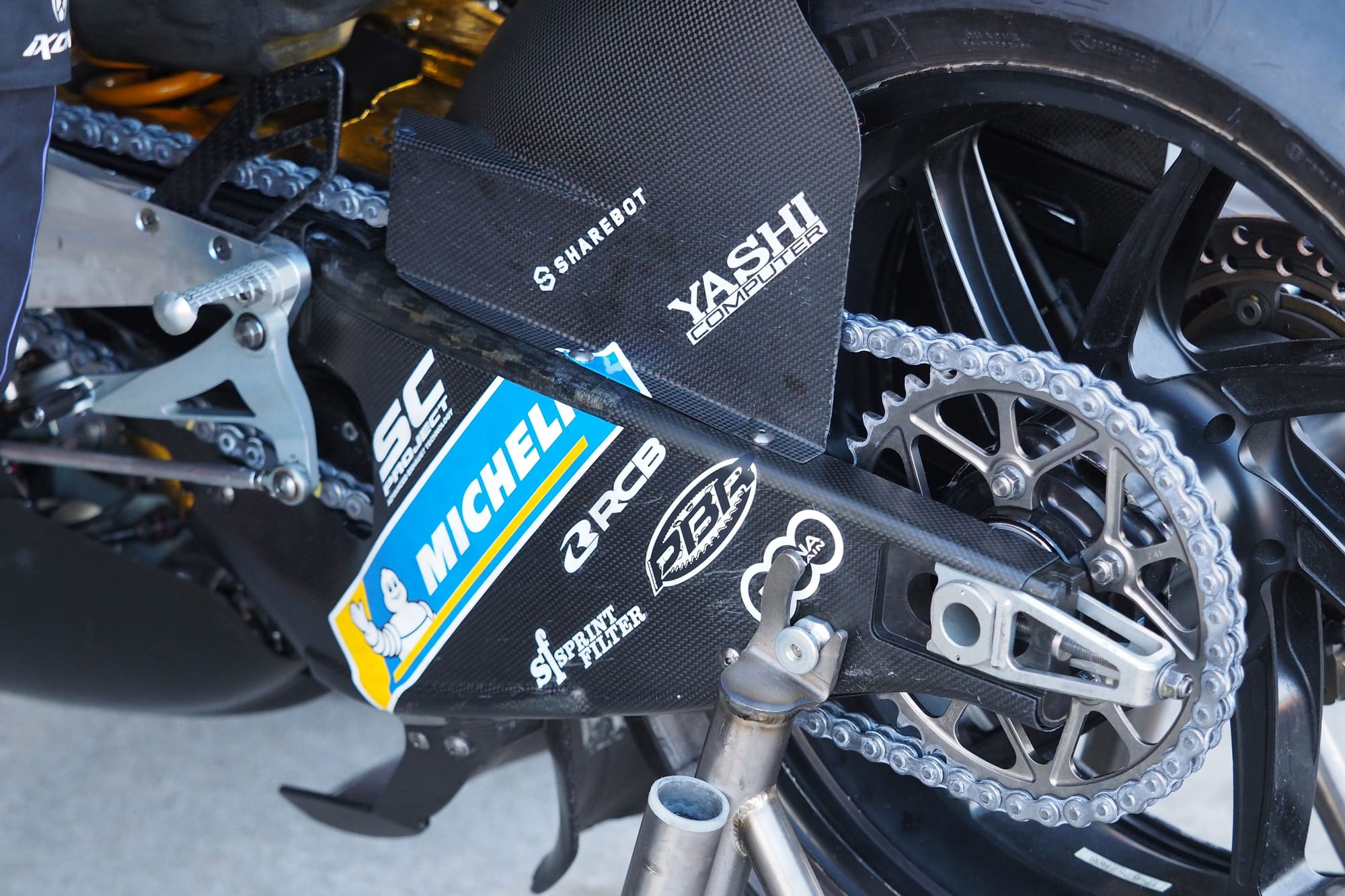In addition to Marc Marquez's first laps on a Ducati and Pedro Acosta's debut in the premier class, the post-race MotoGP test at Valencia was the stage for the first public appearance of Aprilia’s latest technical innovation on its RS-GP bike: a full carbon fibre frame being used by test rider Lorenzo Savadori.
But while Aprilia is now content to show it off in public, it insists that the new frame remains at least for now a pure research tool rather than something that will be ready to race any time soon.

It's not the first time in 2023 that we’ve seen carbon frames - KTM made a mid-season jump away from its traditional steel design for both Brad Binder and Jack Miller - but Aprilia’s prototype is nonetheless the most visually striking version that we’ve seen in modern MotoGP.
KTM’s design uses carbon in place of steel tubes in the bike's trellis frame but, thanks in large part to the design of the bike, it remains largely hidden away, with only a close inspection able to show the difference between the two materials.
Previous attempts in the modern era have never quite amounted to a full carbon fibre frame, either. Suzuki and Honda experimented with inserts that changed the characteristics of their aluminium box frames, while Ducati’s earlier attempts instead used the engine as the frame with only carbon fibre mountings surrounding it.
Aprilia, on the other hand, has gone for a full like-for-like replacement for its own traditional aluminium frame which, when coupled with the carbon swingarms that have become commonplace across the MotoGP grid in recent years, and the plain black carbon test fairings, created an immediately distinctive look in the Valencia pitlane.
It comes as part of Aprilia's latest search for improvements from the bike - and, despite both the cost and the expertise required to work with carbon fibre, it is a development that promises real benefits down the line should Aprilia master it.

There are myriad reasons why making the switch to carbon fibre makes sense. Firstly, the material is significantly lighter, saving valuable weight. But the real benefits lie in what the material can be made to do.
It is not super stiff and rigid like many assume, but rather it is capable of being stiff in some directions but flexible in others. Used correctly, it can combine the best of both worlds to create components that are stiff under braking and acceleration (torsional stiffness) but more flexible while cornering (lateral stiffness).
Being able to essentially tune the exact flex from the material depending on the way that the layers of carbon material are placed atop each other before being baked means that a well set-up carbon frame can bring significant improvements in grip and cornering by effectively allowing engineers to create a self-balancing effect that helps the bike to corner itself at speed.

With better turning comes a more agile machine, but it also helps to preserve tyre life and reduces the amount of lean needed to turn - both factors that help racers save crashes.
But those benefits aren’t coming to the track any time soon, according to Savadori. He remained tight-lipped about the exact benefits that Aprilia has so far seen from the frame.
“We were focused only on the carbon frame,” he said when quizzed by The Race, explaining his Valencia test programme, “but it’s not our priority for 2024.
“We’re just riding and analysing some information, and we needed to receive some new information. But we’re focusing in another way. It's the very beginning [of this project].

“We only started to use it this summer and we need to test more. We need to understand some things better. It has some positive aspects and also some negatives, but it's not the priority for Aprilia.
“It’s different, there is a positive aspect and a negative. Of course, in general the weight is important because it’s less, but it can do more, too.”



